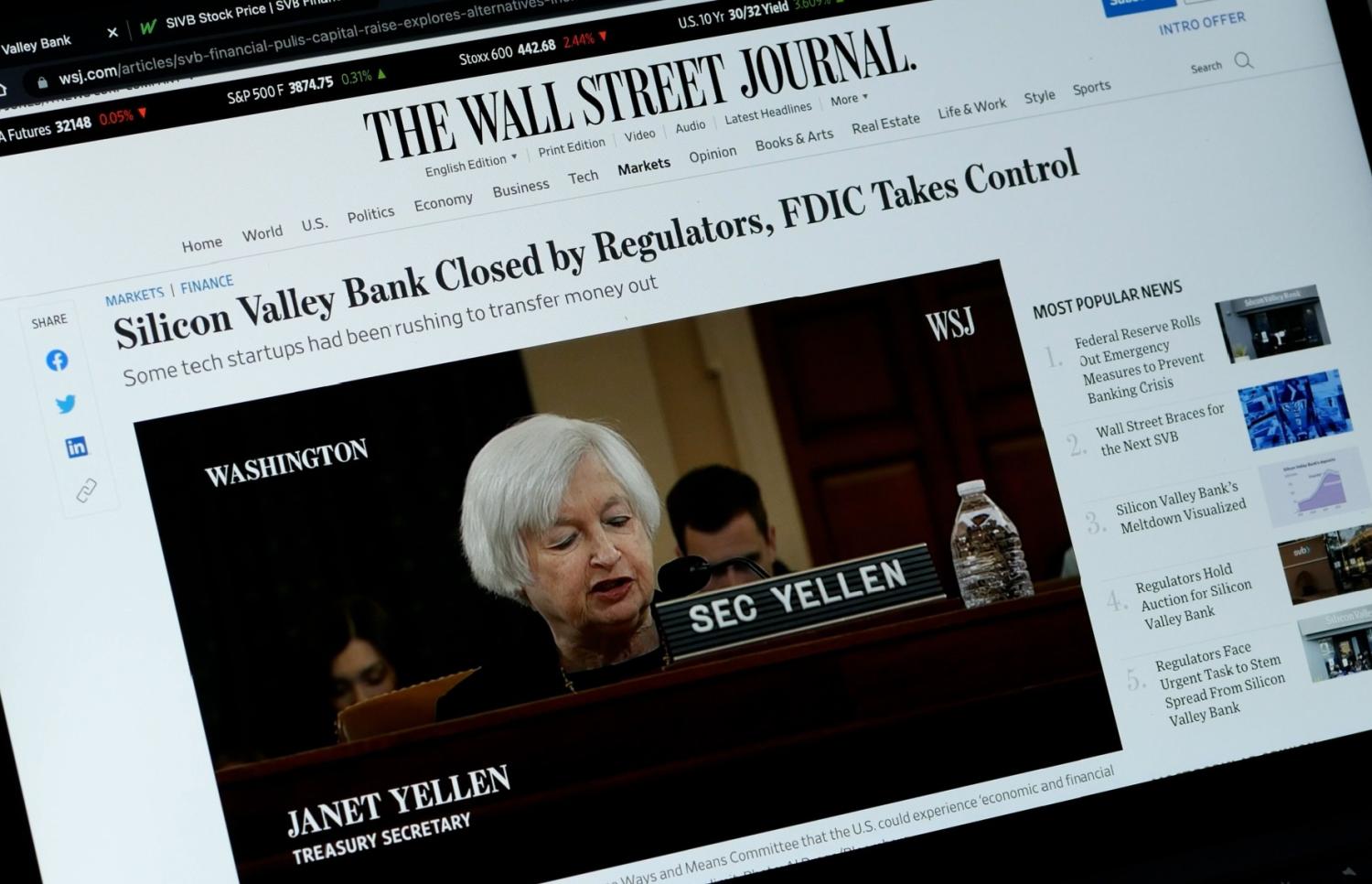The paper summarized here is part of the Spring 2024 edition of the Brookings Papers on Economic Activity (BPEA), the leading conference series and journal in economics for timely, cutting-edge research about real-world policy issues. The conference draft of this paper was presented at the Spring 2024 BPEA Conference on March 28-29, 2024 (conference drafts, recordings, and slides are available via the link). Submit a proposal to present at a future BPEA conference here.
Final version posted: November 2024
Download final paper with discussant comments, discussion summary, and appendix
Uninsured deposits should be subjected to tougher regulatory requirements to guard against the type of rapid runs that toppled three large regional banks last spring, suggests a paper discussed at the Brookings Papers on Economic Activity (BPEA) conference on March 29. In the wake of the failures of Silicon Valley Bank, Signature Bank, and First Republic Bank (three of the four largest bank failures in U.S. history), the authors look at two trends over the past quarter century—the substantial growth of uninsured deposits and the migration of business lending to non-banks. The trends challenged the failed banks and banks like them, and in some cases left them vulnerable to runs. And, using a simple model they constructed, the authors assess regulatory options for reducing the risk of destabilizing runs. “One of the most striking developments that we document … is a dramatic growth in the economy-wide ratio of bank deposits to GDP [gross domestic product], with much of this growth coming from large uninsured deposits,” write Samuel G. Hanson, Victoria Ivashina, Laura Nicolae, Jeremy C. Stein, Adi Sunderam, and Daniel K. Tarullo, all from Harvard University.
According to their paper—”The Evolution of Banking in the 21st Century: Evidence and Regulatory Implications”—total deposits in the fourth quarter of 1995 were 49% of GDP, with 20% of those deposits uninsured. By the third quarter of 2023, total deposits were 75% of GDP, 39% of them uninsured. Adding to that vulnerability, technology and social media have made it increasingly easier for large depositors to quickly withdraw their money. Meanwhile, banks with the most rapid growth in deposits have seen the biggest declines in business lending, which has migrated toward non-bank entities such as securitization vehicles, mutual funds, insurance companies, and, in recent years, private-credit funds and business development companies. (Smaller community banks tend to specialize in lending to smaller firms and have been less affected by the growth of non-bank institutions.) Instead of lending to large- and medium-size businesses, regional banks have shifted toward investing in longer-term Treasury securities and government-guaranteed mortgage backed securities. Those securities have little or no credit risk (the risk of default) but they are subject to interest-rate risk. When interest rates rise sharply, as they did in 2022 when the Federal Reserve raised rates to fight inflation, existing long-term securities lose value because investors can earn more from newly issued securities. To reduce the risk of runs, the authors looked at expanding federal deposit insurance to cover all or most deposits. But that expansion of the government’s footprint would increase taxpayer exposure and could weaken banks’ incentives to guard against risk. Also, in the case of banks that have shifted away from lending, it would in effect subsidize bond holding rather than lending. Instead, the authors favor strengthening liquidity regulations, which aim to ensure banks have funds available to meet deposit withdrawals. The authors would require banks with more than $100 billion in assets to back their uninsured deposits by pre-positioning collateral, largely in the form of short-term government securities, at the Federal Reserve. That requirement would enable them to withstand a run by borrowing from the Fed’s discount window and would encourage them to shift their asset-mix away from longer-term securities and toward short-term securities, which are much less subject to interest-rate risk. The authors also recommend that regulators re-think rules that, except for the eight largest U.S. banks, shield regulatory capital from reflecting most market losses on the securities banks hold. And, the authors recommend that regulators “look more positively on proposed mergers of mid-size regionals and on acquisitions of smaller banks by mid-sized regionals.” That could either help regionals to better compete with the largest banks or could aid in wringing out excess capacity to the extent that the business model of the regionals continues to be under pressure.
CITATION
Hanson, Samuel G., Victoria Ivashina, Laura Nicolae, Jeremy C. Stein, Adi Sunderam, and Daniel K. Tarullo. 2024. “The Evolution of Banking in the 21st Century: Evidence and Regulatory Implications.” Brookings Papers on Economic Activity, Spring: 343–389.
Krishnamurthy, Arvind. 2024. “Comment on ‘The Evolution of Banking in the 21st Century: Evidence and Regulatory Implications.’” Brookings Papers on Economic Activity, Spring: 390–396.
Rajan, Raghuram. 2024. “Comment on ‘The Evolution of Banking in the 21st Century: Evidence and Regulatory Implications.’” Brookings Papers on Economic Activity, Spring: 396–411.
-
Acknowledgements and disclosures
Jeremy C. Stein and Daniel K. Tarullo are former members of the Federal Reserve Board of Governors. Adi Sunderam was a visiting scholar at the Federal Reserve Bank of Boston from January to June 2023, and Victoria Ivashina has been a visiting scholar there since 2015. Laura Nicolae is a PhD intern at the Federal Reserve Board of Governors, and her work on this paper was conducted outside of her internship work. The views presented in this paper are solely those of the authors and do not represent the views of the Federal Reserve Board or the Federal Reserve System. The authors did not receive financial support from any firm or person for this paper or, other than the aforementioned, from any firm or person with a financial or political interest in this paper. The authors are not currently an officer, director, or board member of any organization with a financial or political interest in this paper.
The authors thank the editors Jan Eberly and Jón Steinsson, and discussants Arvind Krishnamurthy and Raghuram Rajan, as well as Bill English for extremely helpful comments.
David Skidmore authored the summary language for this paper. Chris Miller assisted with data visualization.
The Brookings Institution is committed to quality, independence, and impact.
We are supported by a diverse array of funders. In line with our values and policies, each Brookings publication represents the sole views of its author(s).










